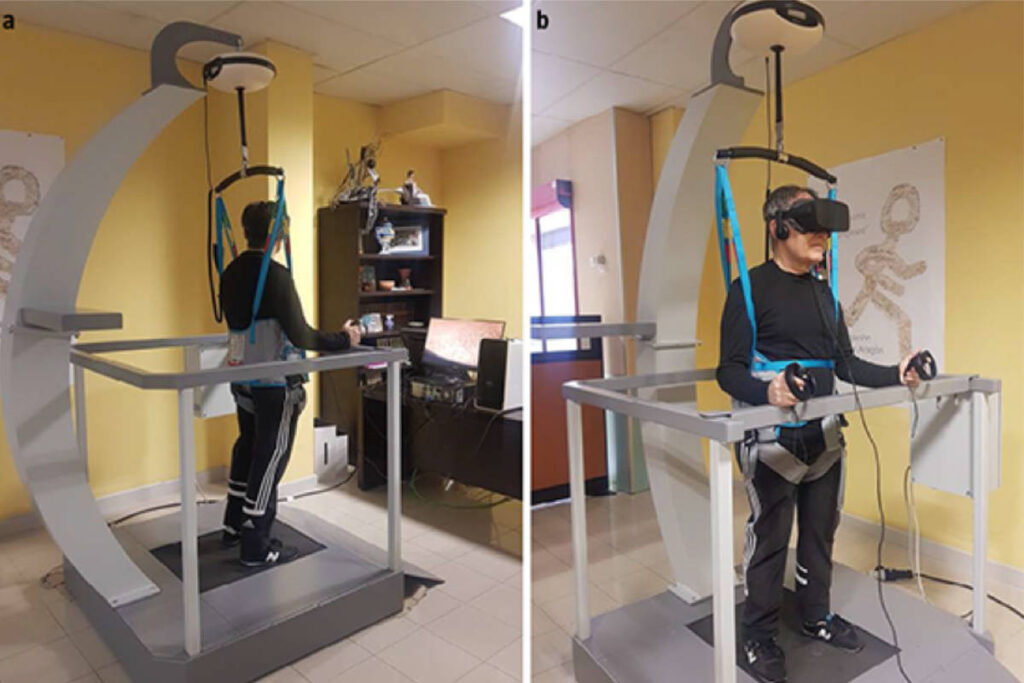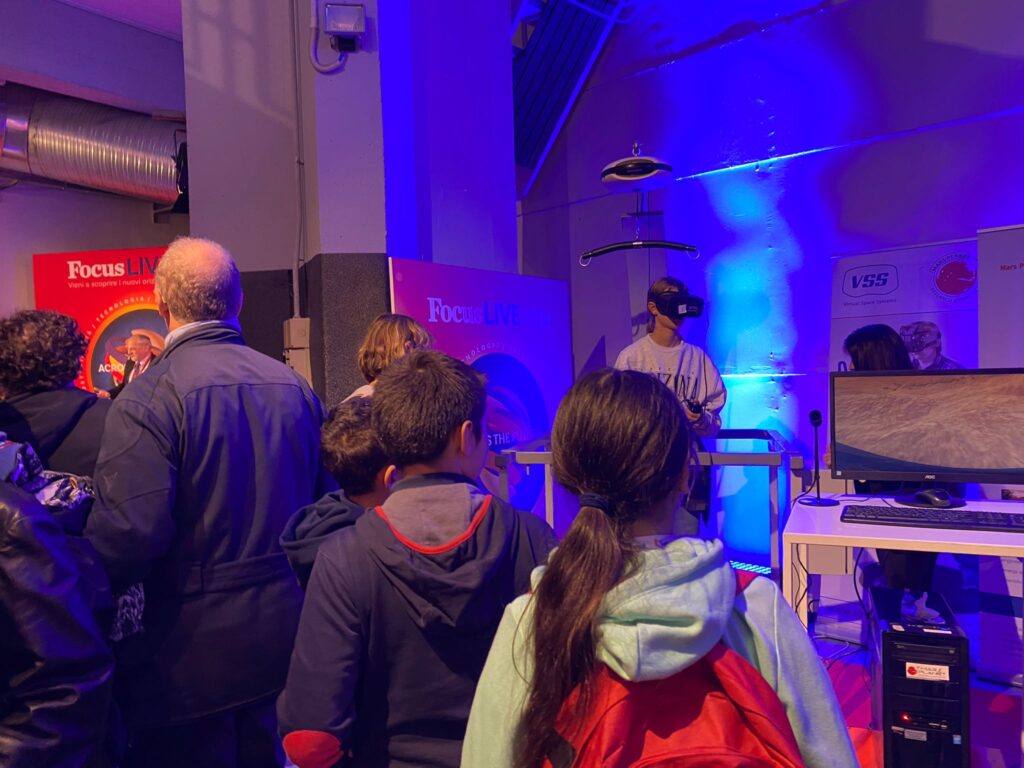MOTIGRAVITY
Motigravity is a system designed to simulate human exploration of Mars, the Moon, and other space environments. This tool, allowing 360 degrees of movement, is able to reproduce the low-gravity environment found in various space contexts, such as the extravehicular activities (EVA) performed by astronauts. It simulates the movement of astronauts at different levels of gravity on different terrains and space surfaces, thanks to a library of explored space regions.

SPACE APPLICATIONS
Motigravity’s hardware, consisting of lifting and harness systems and sensors, allows the simulation of user movement in low-gravity conditions. The device can be equipped with software that simulates and recognizes the main human senses such as touch, smell, hearing, and brain activity. The goal of S.P.A.C.E is to provide the space industry with an affordably priced tool capable of simulating a wide variety of exploration activities at different levels of gravity. Motigravity can be used in a single or multi-user configuration, and the software control system can recognize external devices, such as rovers, stations, or communication signals, including audio/video recognition.
MEDICAL APPLICATIONS
In the medical sector, Motigravity is equipped with specific software to assist patients in the rehabilitation of diseases such as Parkinson’s, stroke, multiple sclerosis, behavioral disorders, sleep disorders, and in the treatment of anxiety. Motigravity offers medical personnel a wide range of applications for the diagnosis and rehabilitation of neuromotor diseases.


EDUCATIONAL APPLICATIONS
Motigravity is a powerful educational tool that can be used in sports, recreational, and STEM contexts. It is equipped with software specifically developed for each of these applications and is regularly provided to schools, museums, educational centers. It is an excellent and highly innovative tool for introducing young generations to scientific themes.
